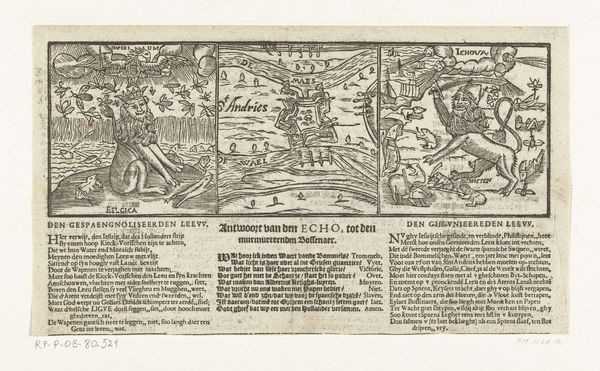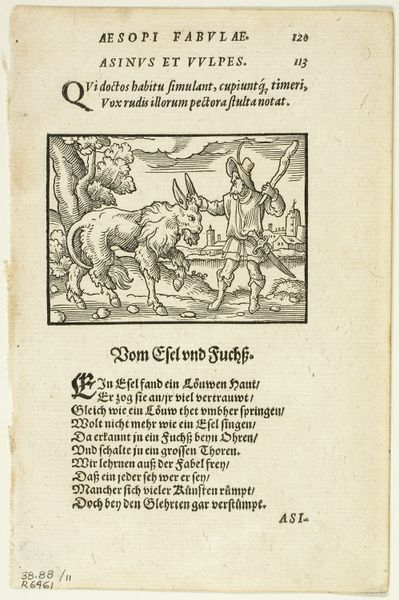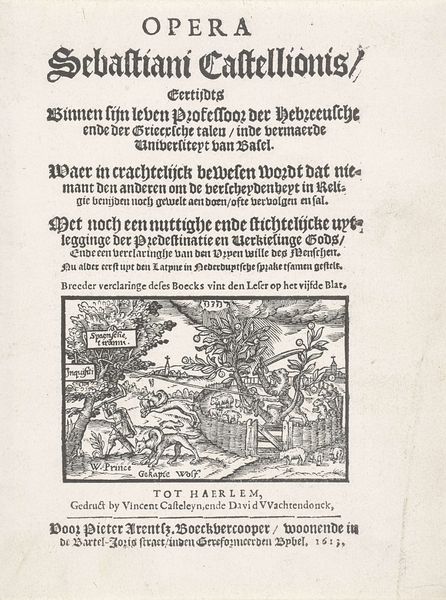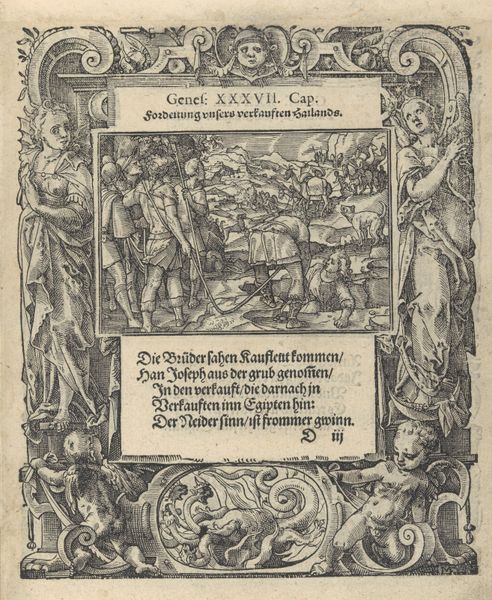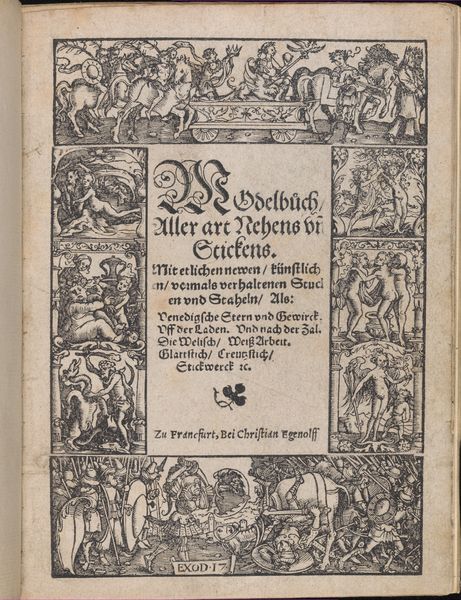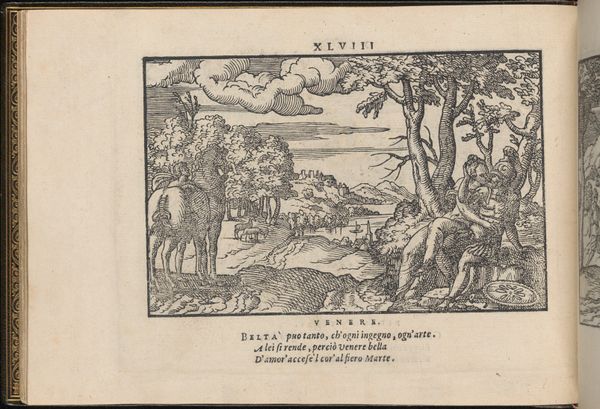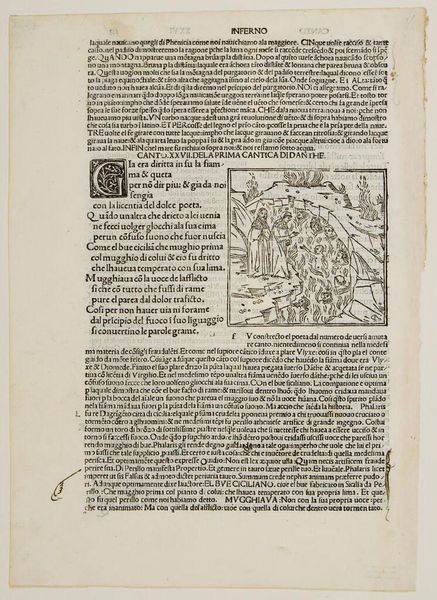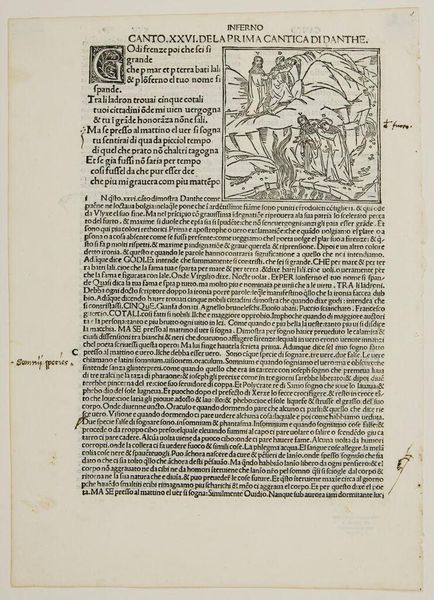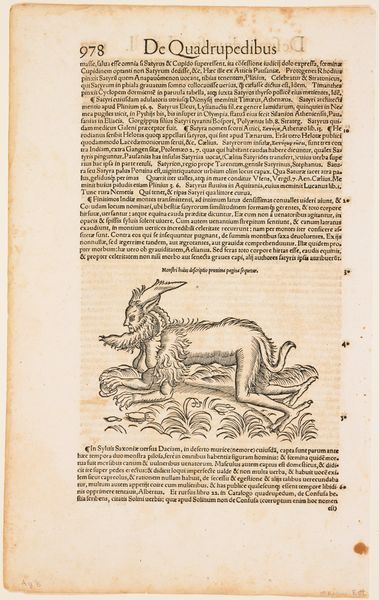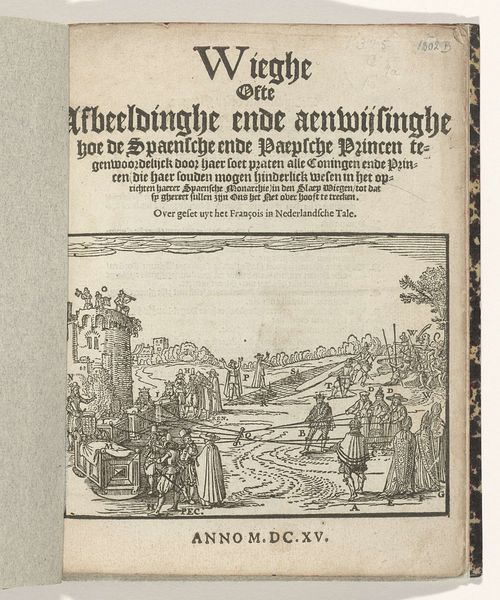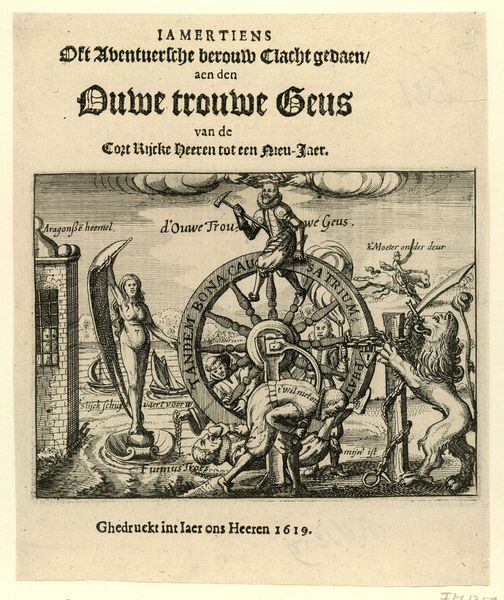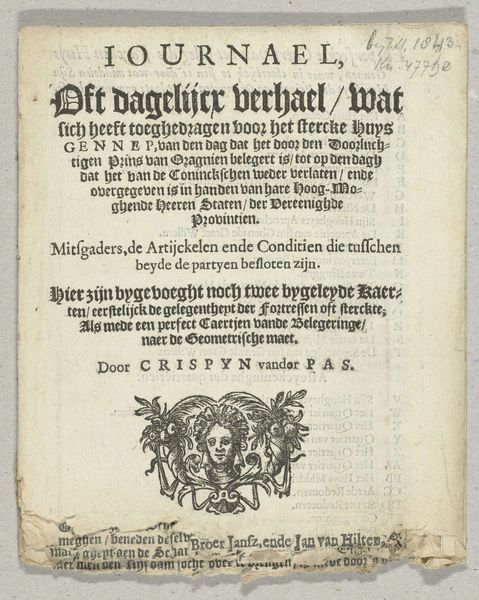
Titelpagina van het pamflet: Aende Afgewekene Provintien van Hollandt, Zeelandt, etc. / Aenwysinghe opt vermaen vande verleyde ende overheerde Provintien van Nederlandt, ghedaen aen de vereenighde Nederlanden, 1599 1599
0:00
0:00
print, woodcut, engraving
#
narrative-art
#
dutch-golden-age
# print
#
landscape
#
figuration
#
woodcut
#
engraving
Dimensions: height 200 mm, width 145 mm
Copyright: Rijks Museum: Open Domain
Editor: Here we have a rather fascinating piece from 1599. It's the title page of a pamphlet called "Aende Afgewekene Provintien van Hollandt, Zeelandt, etc." It is unsigned, so the artist is anonymous. It combines both woodcut and engraving techniques. The illustration depicts a group of foxes and, honestly, the overall feel is somewhat allegorical and unsettling. What stories do you think this title page is trying to tell? Curator: This pamphlet cover provides insight into the socio-political fractures of the late 16th century. It points to a time of upheaval in the Netherlands with the northern provinces vying for independence from Spanish rule. What does the image of the foxes evoke for you in relation to this context? Editor: Well, the foxes could symbolize cunning or perhaps the besieged nature of the Dutch provinces. Maybe the title references internal disputes and betrayal between different areas within the Netherlands. Curator: Exactly. Pamphlets such as this played a crucial role in shaping public opinion and bolstering support. Note how the artist strategically juxtaposes the fox imagery with biblical proverbs. It’s an appeal to morality as much as a political argument, trying to shape public imagination. What are your thoughts about how this imagery influences the pamphlets reach, Editor? Editor: I hadn’t considered the pamphlets persuasive intention. The inclusion of familiar religious passages probably makes the whole argument seem more righteous and trustworthy. Also the depiction of the landscape roots this appeal in the particular territory. Curator: Indeed. By analyzing this seemingly simple title page, we can unravel layers of political tension and religious persuasion tactics employed during the Dutch Revolt. This piece reminds us that art, even in printed form, held considerable power to mobilize and influence public thought. Editor: I see it in a completely new light now! Thanks, Curator, this gave me great insights into the public function of art in political contexts.
Comments
No comments
Be the first to comment and join the conversation on the ultimate creative platform.
